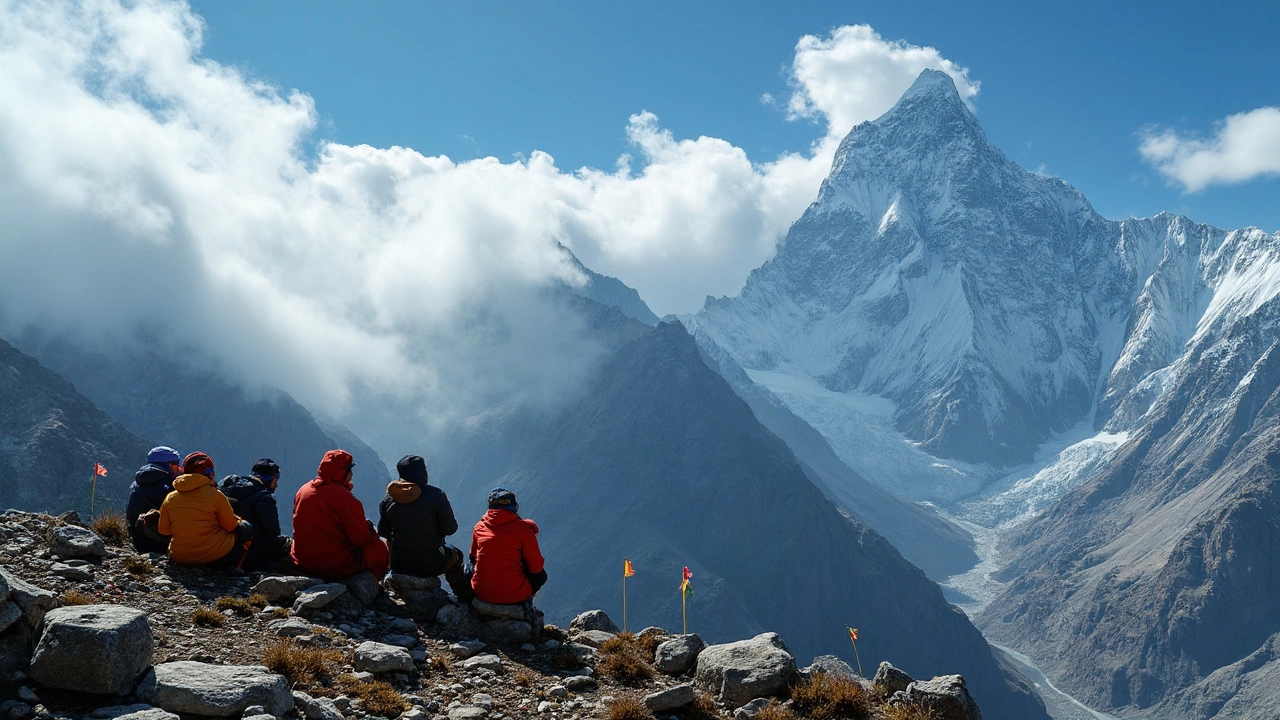SEARCH
Kanchenjunga: Your Practical Guide to India’s Highest Peak
If you’ve ever dreamed of standing close to a mountain that pierces the clouds, Kanchenjunga should be at the top of your list. Sitting on the border of Sikkim and Nepal, it’s the world’s third‑tallest mountain at 8,586 m. The trek doesn’t require climbing the summit – most travelers aim for the stunning base‑camp views and the surrounding valleys. Below you’ll find everything you need to plan a safe, enjoyable trip without the fluff.
When to Go and How to Get There
The best window for trekking around Kanchenjunga is from late March to early June and from late September to early November. Spring offers blooming rhododendrons, while autumn brings clear skies and crisp air. To reach the trailhead, fly into Bagdogra Airport (nearest major airport) and take a shared taxi or bus to Gangtok. From Gangtok, another two‑hour drive gets you to Yuksom, the traditional starting point for the trek.
Permits, Routes, and What to Expect
All foreign trekkers need a Protected Area Permit (PAP) from the Sikkim government and a Restricted Area Permit (RAP) from the Indian Army. Your local travel agency can handle the paperwork; it usually takes a few days. The most popular route is the Goecha La trek, a six‑day circuit that passes through beautiful glacial lakes, alpine meadows, and villages like Lingtse and Zemu. You’ll trek 50‑60 km total, gaining about 800 m of elevation each day – a moderate climb that lets your body adapt.
Don’t forget to carry a good quality sleeping bag (rated for -10 °C), a down jacket, and sturdy trekking boots. Altitude sickness is real, so ascend slowly, drink plenty of water, and take a rest day at 4,200 m in Dzongri. If you feel dizzy or have a pounding headache, descend immediately – the mountain won’t wait.
Accommodations along the trail are basic teahouses with shared rooms and communal bathrooms. Expect simple meals of rice, dal, and momos. Prices are low – under $15 per night – but tips for the guides are appreciated. Talk to the locals; they’ll share stories about the mountain’s sacred status among the Lepcha and Bhutia people.
After completing the trek, spend a couple of days in Gangtok. Visit the Rumtek Monastery, sample local cheese (chhurpi), and stroll through the bustling MG Road market. This wind‑down period lets you recover from the high altitude before heading home.
Kanchenjunga isn’t just a trek – it’s a blend of natural beauty, cultural richness, and personal challenge. With the right timing, proper permits, and sensible packing, you can experience the Himalayan grandeur without risking safety. Ready to lace up your boots and chase those cloud‑kissed peaks? Your adventure starts with a single step from Yuksom.

Is Kanchenjunga Harder Than Everest? Trekking Realities Compared
Ever wondered whether climbing Kanchenjunga really gives Everest a run for its money? This article strips away the myths and straight talk about what makes Kanchenjunga and Everest different in terms of trekking challenges. We’ll dig into terrain, weather, technical demands, and what it actually feels like to set foot on these legendary trails. Expect concrete tips and honest insights from real trekkers. If you're eyeing a big Himalayan adventure, you’ll find out which peak—and trek—suits your guts, skills, and goals.
Continue reading